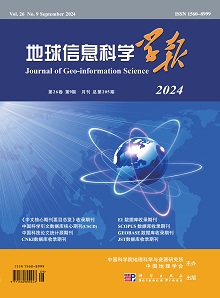基于稀疏网格土壤样本的全国尺度土壤属性制图研究
引用次数: 1
摘要
国家尺度土壤性质数据是生物地球化学和水文循环研究的必要输入。在该尺度下获得准确的土壤性质数据,常用的方法有两种:土壤联动法和空间插值法。本文以吉林省土壤有机质(SOM)含量为例,基于8~32 km栅格土样和1∶100万土壤图对这两种方法进行评价,以期为基于栅格土样的全国尺度土壤性质制图提供建议。独立验证表明,土壤连锁法的平均误差(ME)为-0.58,高于IDW插值法(0.13),但平均绝对误差(MAE)和均方根误差(RMSE)分别为1.12和1.76,低于IDW插值法(1.43和2.12)。IDW插值得到的土壤性质图虽然反映了土壤性质分布的总体趋势,但存在“牛眼”现象,在土壤样品少或没有土壤样品的地区估测结果不可靠。土壤链接法获得的土壤性质图忽略了土壤图上同一土壤类型内部的变化,在不同土壤边界周围存在着土壤性质的断裂,但该图较好地反映了土壤的分布规律,可以获得详细的土壤性质图。从两种方法的地图验证结果来看,土壤链接法在基于稀疏网格土壤样本的全国尺度土壤属性制图中优于空间插值法。本文章由计算机程序翻译,如有差异,请以英文原文为准。
A Study on Soil Property Mapping at National Scale Based on Sparse Grid Soil Samples
Soil property data at national scale are necessary inputs for researches on biogeochemical and hydrological cycles.There are two commonly used methods to obtain accurate soil property data at this scale including soil linkage method and spatial interpolation method.In this paper,soil organic matter(SOM) content in Jilin Province was taken as a case study to evaluate these two methods based on 8~32 km grid soil samples and 1∶1 million soil map,in order to provide suggestions about soil property mapping at national scale based on sparse grid soil samples.Independent validation indicated that the mean error(ME) of the soil linkage method was-0.58,higher than the inverse distance weighted(IDW) interpolation method(0.13),but the mean absolute error(MAE) and root mean square error(RMSE) of the soil linkage method were 1.12 and 1.76,respectively,lower than those of IDW interpolation method(1.43 and 2.12).Although the soil property map through IDW interpolation revealed the general trend of soil property distribution,it had "Bull's eye" pattern and the estimations in areas with few or no soil samples were unreliable.The soil property map obtained by soil linkage method ignored the variations inside the same soil type on the soil map and a break of soil property existed around different soil boundaries,but the soil distribution regularity was well represented in this map and the details could be obtained.According to the validation results of maps through these two methods,the soil linkage method is better than the spatial interpolation method in soil property mapping based on sparse grid soil samples at national scale.
求助全文
通过发布文献求助,成功后即可免费获取论文全文。
去求助
来源期刊
CiteScore
2.70
自引率
0.00%
发文量
3757
期刊介绍:
Journal of Geo-Information Science is an academic journal under the supervision of Chinese Academy of Sciences, jointly sponsored by Institute of Geographic Sciences and Resources, Chinese Academy of Sciences and Chinese Geographical Society, and also co-sponsored by State Key Laboratory of Resource and Environmental Information System, Key Laboratory of Virtual Geographic Environment of Ministry of Education and Key Laboratory of 3D Information Acquisition and Application of Ministry of Education. Founded in 1996, it is openly circulated in the form of a monthly magazine.
Journal of Geoinformation Science focuses on publishing academic papers with geographic system information flow as the main research object, covering research topics such as geographic information cognitive theory, geospatial big data mining, geospatial intelligent analysis, etc., and pays special attention to the innovative results of theoretical methods in geoinformation science. The journal is aimed at scientific researchers, engineers and decision makers in the fields of cartography and GIS, remote sensing science, surveying and mapping science and technology. It is a core journal of China Science Citation Database (CSCD), a core journal of Chinese science and technology, a national Chinese core journal in domestic and international databases, and it is included in international databases, such as EI Compendex, Geobase, and Scopus.

 求助内容:
求助内容: 应助结果提醒方式:
应助结果提醒方式:


